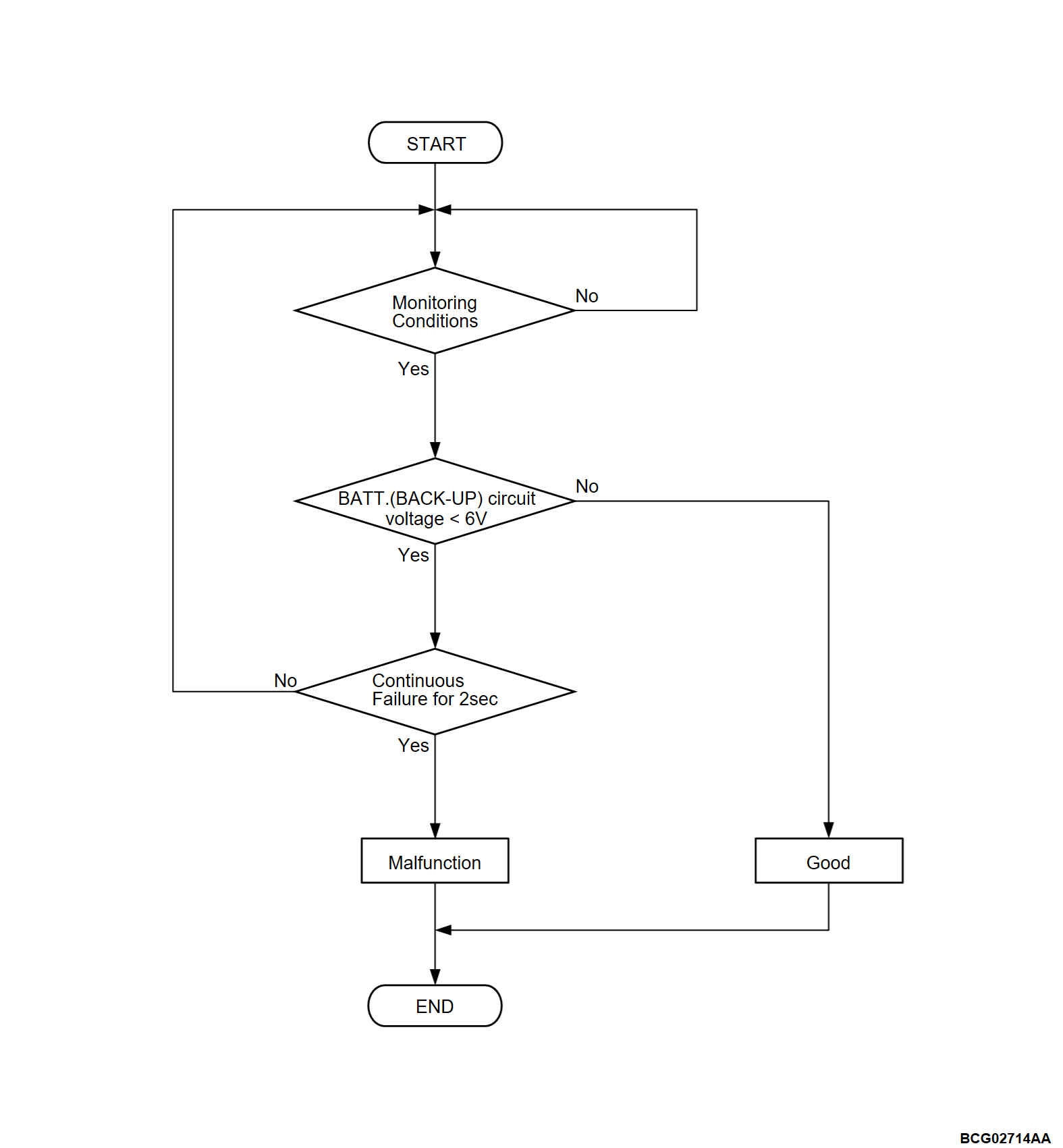DTC P1605: Battery backup line(PHEV-ECU)
| caution | Before replacing the ECU, ensure that the communication circuit is normal. |
MONITOR EXECUTION
- Continuous
MONITOR EXECUTION CONDITIONS (Other monitor and Sensor)
Other Monitor (There is no temporary DTC stored in memory for the item monitored below)
- Not applicable
Sensor (The sensor below is determined to be normal)
- Not applicable
DTC SET CONDITIONS
Check Conditions
- The power supply mode of electric motor switch is ON.
- The PHEV-ECU power supply voltage is more than 10 volts.
Judgment Criterion
- The backup voltage is less than 6 volts for 2 seconds.
PROBABLE CAUSES
- Damaged harness or connector.
- Malfunction of fuse.
- Malfunction of the ETACS-ECU.
- Malfunction of the PHEV-ECU.
DIAGNOSIS
Required Special Tools
- MB991223: Wiring harness set
- MB992006: Extra fine probe
STEP 1. Using scan tool (M.U.T.-IIISE), check whether the other DTC is set.
Check if DTC B210A or B210B is set in the ETACS-ECU (Refer to GROUP 54A - ETACS, Diagnostic Trouble Code Chart  ).
).
 ).
).Is the DTC set?
STEP 2. Voltage measurement at PHEV-ECU connector (terminal BAT).
(1) Disconnect the connector, and measure at the wiring harness side.
(2) Measure the voltage between the PHEV-ECU connector (terminal BAT) and body ground.
OK: Approximately 12 volts (battery positive voltage).
Is the check result normal?
STEP 3. Check the power supply line for open circuit and short circuit (ETACS-ECU and the PHEV-ECU).
Check the wiring harness between ETACS-ECU connector (terminal BUP3 and BUP4) and the PHEV-ECU connector (terminal BAT).
Is the check result normal?
STEP 4. Test the OBD-II drive cycle.
(1) Carry out a test drive with the drive cycle pattern. Refer to Diagnostic Function - OBD-II Drive Cycle - Pattern 1  .
.
 .
.(2) Check the DTC.
Is the DTC set?
![[Previous]](../../../buttons/fprev.png)
![[Next]](../../../buttons/fnext.png)


